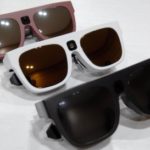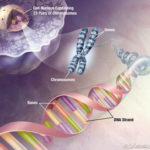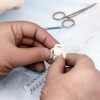DSAEK failure in eyes with pre-existing glaucoma.
During the Cornea and Eye Banking Forum, Jennifer Li, MD, Sacramento, California, highlighted a study on DSAEK failure in eyes with pre-existing glaucoma.
DSAEK has become the most common form of corneal transplantation. “We do know, of course, that glaucoma can be linked to endothelial keratoplasty failure,” she added.
The study was a retrospective chart review of all DSAEK cases by a single surgeon from 2012–2018. The primary endpoint was graft failure, with secondary endpoint of graft dislocation.
Data collected included preoperative demographics, pre/post IOP, surgical indication, BCVA, failures, glaucoma diagnosis, glaucoma surgery, glaucoma medications, and re-bubbling.
Dr. Li noted that 241 eyes of 176 patients met inclusion criteria. This included 116 eyes with glaucoma.
Fuchs’ was the primary indication for DSAEK, Dr. Li said. Of all the eyes included in the study, 41 (17%) experienced graft failure. The failure rate for eyes with no history of glaucoma was 2.4% and 32.8% in eyes with a history of glaucoma. Dr. Li said grafts tended to fail earlier in patients with glaucoma.
Any glaucoma surgery increases risk of failure, she said, and for patients with more than one prior glaucoma surgery, the risk becomes even greater. Glaucoma drainage devices are one of the biggest factors for DSAEK failures, she said.
Though the failure rate based on the number of IOP-lowering medications was not statistically significant, Dr. Li said that patients are generally less likely to have a graft failure when on fewer medications. Many medication subtypes incur risks on DSAEK failures, she said, and use of a topical beta-blocker was statistically significant. Dr. Li also noted hypotony as a factor in graft failure and increased need for re-bubbling.
Limitations of this study were that it was a retrospective and there were multiple potential confounders.
In conclusion, Dr. Li stressed the risk of DSAEK failure with glaucoma and the potential for worse outcomes with beta-blockers, use of multiple medications, and hypotony. She also added that POAG, CACG, and JOAG may be worse than other subtypes of glaucoma.
Editors’ note: Dr. Li has no relevant financial interests.
‘Management of Limbal Stem Cell Deficiency and Corneal Stromal Opacification’
The first mini-symposium at the Cornea and Eye Banking Forum focused on limbal stem cell deficiency (LSCD) and corneal stromal opacification, with presenters highlighting LSCD, autologous limbal stem cell transplantation, repair of corneal injuries using bioadhesive hydrogels, and cultivated human corneal keratocytes for corneal opacities.
Sophie Deng, MD, PhD, Los Angeles, led with LSCD discussion. It has been described as “an ocular surface disease caused by a decrease in the population and/or function of corneal epithelial stem/progenitor cells.” This decrease leads to the inability to sustain the normal homeostasis of the corneal epithelium, she said. LSCD may be acquired or hereditary, and diagnosis is based on clinical presentation (symptoms and signs). However, the signs of an abnormal epithelium can be subtle and often not specific to LSCD, Dr. Deng said, adding that adjunct diagnostic tests may be necessary.
Also during the session, Nasim Annabi, PhD, Los Angeles, discussed repair of corneal injuries using bioadhesive hydrogels, specifically highlighting a product called GelCORE.
Corneal stroma defects may be caused by physical trauma, burns, inflammation, or infections/corneal ulcers, she said. The standard of care to handle these include cyanoacrylate glue, suturing, or tissue patch grafting/therapeutic corneal grafting, but all of these have significant disadvantages, such as high costs, uncontrolled tissue healing, and risk of immune response (in case of grafts), Dr. Annabi said.
She went on to describe GelCORE as made from gelatin-based, photocrosslinkable biomaterials that is more adhesive than commercially available sealants. Dr. Annabi added that GelCORE is easy to apply with tunable biomechanical properties, a tunable retention period by varying polymer ratios, strong adhesion, and the potential for use as drug delivery platform.
Editors’ note: The speakers have no relevant financial interests.
‘Management of Corneal Endothelial Dysfunction: Where Are We Heading?’
The second mini-symposium of the Cornea and Eye Banking Forum looked at options in the management of corneal endothelial dysfunction.
Ula Jurkunas, MD, Boston, discussed genetic modulation. The corneal endothelium, with aging and time, is disrupted by guttae, she said.
Fuchs’ is a late-onset genetic disorder, and there are many ways to study the genetics of it, she said.
The most common and relevant gene is TCF4 repeat expansion. Dr. Jurkunas said there are studies underway to understand how TCF4 repeat expansion can be treated, and she noted that one way is to excise those repeats.
Dr. Jurkunas went on to discuss CRISPR-Cas9, which uses a viral vector to perform gene editing in vivo. She noted that there is currently no work with this in cornea underway, however, it has been experimented with in retinal degenerations. Alternatively, instead of packaging CRISPR-Cas9 into a viral particle, you could put it into a nanoparticle, Dr. Jurkunas said.
She also mentioned using an antisense oligonucleotide (ASO), but she noted that this is in a “lab stage” and not in trials.
Dr. Jurkunas offered several key points to consider when designing genetic therapies. First, she said to consider the role of guttae and variation in topographical distribution. Secondly, she said it’s important to consider the interplay between gene and environment and suggested targeting modifiable factors. Lastly, she pointed to lessons learned from Descemet stripping only: not all cells manifest the disease; peripheral cells may be a source of healthy cells; think more about cell migration and proliferation; and know the role of corneal endothelial progenitor cells.












